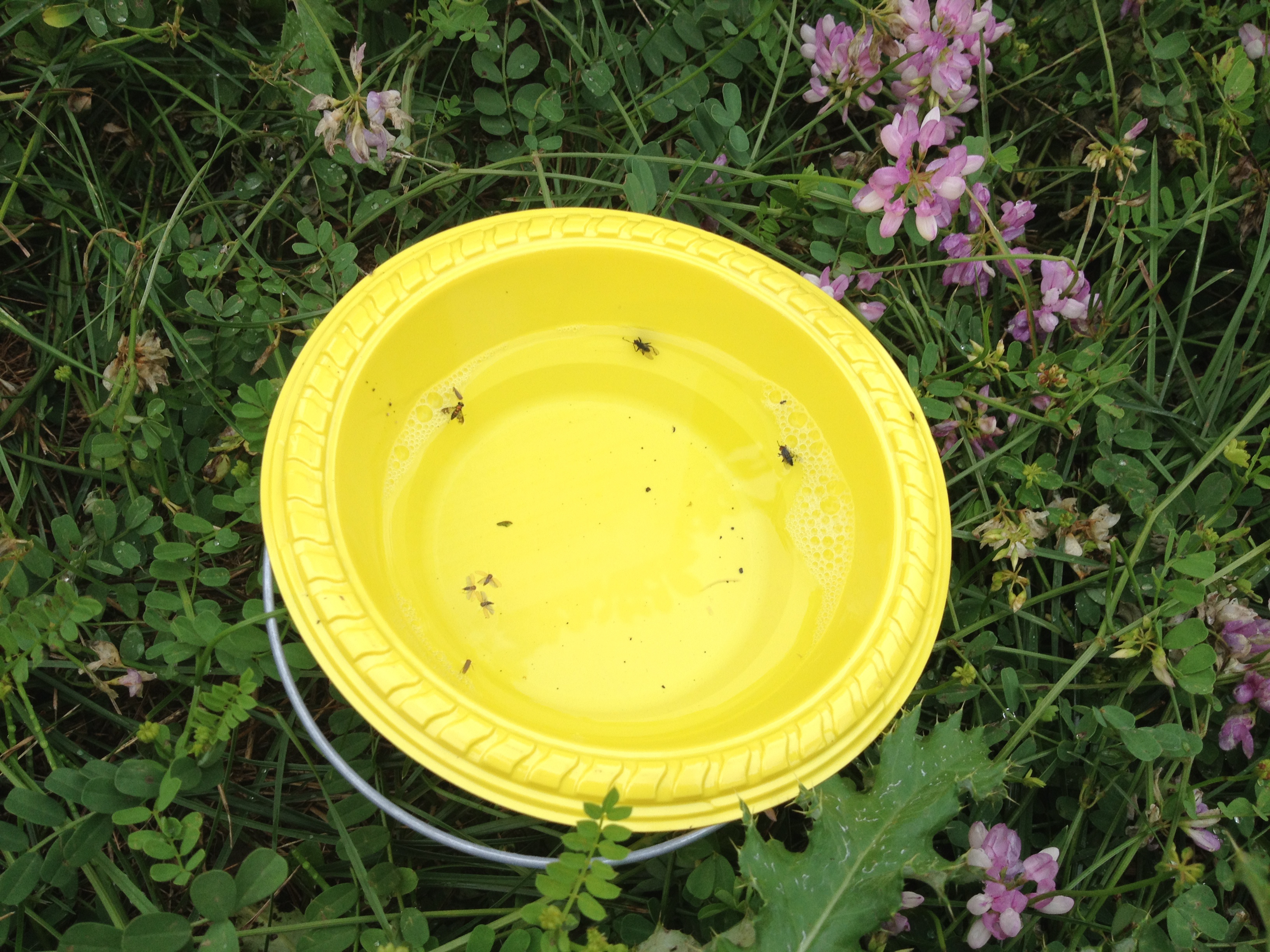Pan Trap on:
[Wikipedia]
[Google]
[Amazon]
 A pan trap is a type of
A pan trap is a type of
 A pan trap is a type of
A pan trap is a type of insect trap
Insect traps are used to monitor or directly reduce populations of insects or other arthropods, by trapping individuals and killing them. They typically use food, visual lures, chemical attractants and pheromones as bait and are installed so that ...
used to sample the abundance and diversity of insects, primarily used to capture small Hymenoptera. Pan traps are typically constructed with a bowl with shallow sides filled with water and soap or a preservative and killing agent. Yellow is the most commonly used color, but other colors including blue, white, and red are used to target different insect species.
Trap construction
A pan trap consists of a shallow bowl, typically made of colored plastic, filled with soapy water, salt, propylene glycol,antifreeze
An antifreeze is an additive which lowers the freezing point of a water-based liquid. An antifreeze mixture is used to achieve freezing-point depression for cold environments. Common antifreezes also increase the boiling point of the liquid, all ...
, or combinations of other preservatives and killing agents. Salt and propylene glycol are sometimes included as preservatives or to reduce evaporative water loss. Insects fly into the soapy water and are unable to escape and are preserved in the water for research usage. Some traps have been mounted on trees to sample the communities of parasitoid wasps
Parasitoid wasps are a large group of hymenopteran superfamilies, with all but the wood wasps (Orussoidea) being in the wasp-waisted Apocrita. As parasitoids, they lay their eggs on or in the bodies of other arthropods, sooner or later causi ...
of the invasive beetle, Emerald ash borer
The emerald ash borer (''Agrilus planipennis''), also known by the acronym EAB, is a green buprestid or jewel beetle native to north-eastern Asia that feeds on ash species. Females lay eggs in bark crevices on ash trees, and larvae feed undern ...
.
Colors
The color of pan traps attracts diverse groups of flying insects. Some pollinators confuse the traps with natural flowers, causing the capture of flying pollinator species, including bees. Some studies have suggested that bee species are more attracted and likely to be captured in blue or white pans compared to yellow pans. However, yellow and white pan traps consistently collect the largest number of species.References
{{Trapping Pest trapping Entomology equipment